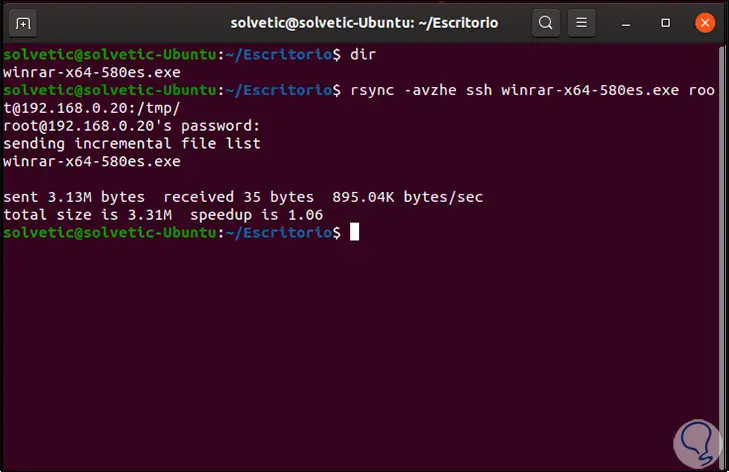


The file is copied using the rsync protocol, which is extremely efficient. The rsync daemon is typically launched automatically using an inetd or xinetd service, or via the use of a script to launch it.Īs soon as the rsync daemon is set up, it will keep a copy of files on the remote system in a local directory. If the daemon is running, the file /var/run/rsync is also used. In our example, the conf message is located in /var/log/rsyncd. We can tell if it’s running by looking at the log file we defined in rsyncd. How Do I Know If Rsync Daemon Is Running? Credit: The first method is to use the -progress option in the rsync command and the -av option to get a summary of the file transfer based on the transfer rate, sent/receive bytes, speed, and total size. If you see the following output, it means that the rsync daemon is not running: You can also check the rsync status by running the command: If you see the following output, it means that the rsync is not running: The last thing that you need to do is to check the rsync status. rsync: sent 84 bytes received 31 bytes total size 0 You can use the following command to view the log file: The log file is located at /var/log/rsync.log. The next thing that you need to do is to check the log file. If the service is not running, you will see the following output: If the service is running, you will see the following output: The first thing that you need to do is to check if the rsync service is running. There are a few things that you need to know before you can use this tool. This tool can be used for local or remote backups. Rsync is a command line tool that is used for copying and synchronizing files. Now, when using the new icon, grsync won’t be bothering you any more with the settings, It’ll immediately execute the “backup” session.When you are using the Linux operating system, there are a few ways that you can check the status of rsync. Now to make it even easier, you could drag the grsync icon from the Applications menu to the GNOME Panel, and change it’s Properties:

The first should will probably take some time. Now you should be ready to test the backup setup, just click Execute. program related settings), go to the “Advanced options” tab:
LINUX GRSYNC INSTALL
Next up, install grsync on the local machine (localhost) and create a new session called (for example) “backup”.ĭestination: if you don’t want to backup all your dotfiles (i.e. With the second command you should fill in the correct user password, however with the third command, SSH shouldn’t ask you for the user password, and just login automatically, because we just put the (passwordless) ssh keys into place.
LINUX GRSYNC PASSWORD
With the first command you need to leave the key password empty.

In this tutorial I’ll be using public key cryptography with ssh to enable automatic logins.įirst you need to login into your backup server, and create a (remote) user useradd remoteuserĪfter that’s done, you’ll need ssh-copy-id -i. However, these is an easy solution for Linux, if you own a machine offsite with a decent Internet connection, preferably colocation.
LINUX GRSYNC WINDOWS
However, these very often involve using proprietary software, which most of the time is only available for the Windows platform. These days large firms (for example like our Dutch telecom company called KPN) are offering a plethora of backups solution, usually nicely priced.


 0 kommentar(er)
0 kommentar(er)
